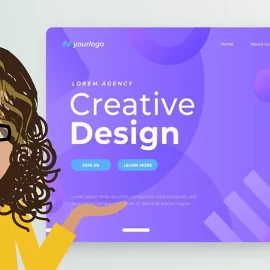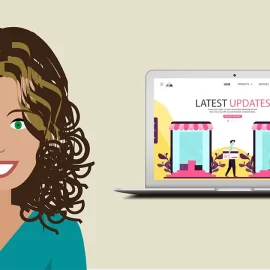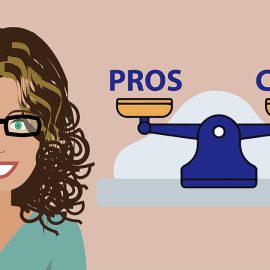
5 Overlooked Website Usability Mistakes
These days, everyone talks about the need for a mobile-friendly website, so that visitors on mobile devices can easily find your business. Luckily, that message is making headway and many sites are becoming mobile-friendly.
Despite that, small business websites often overlook 5 key usability issues that can cost them traffic and sales. Are you making these usability mistakes?
Mistake 1: Unclear webpage purpose
Ask yourself this question: What is the number one thing you want people to do when they visit your home page or a specific page on your website? It’s called a “call-to-action”.
Many small business websites offer no clear call-to-action on important pages. Or they offer too many competing calls-to-action on the same page, thus confusing the visitor.
A call-to-action could be signing up for your mailing list, completing a lead-capture form in exchange for a free download or hitting a BUY button.
Look at important pages individually. Remember, visitors may arrive at your website through different pages. Wherever they arrive, make sure they are guided to the most important thing you want them to do. That one thing should be prominently positioned above the fold, (i.e., high up on the webpage). Make it stand out by using effective font size, colours, imagery and more.
Mistake 2: Confusing navigation
Give visitors a clear path through your website. Navigation is supposed to help visitors find what they are looking for, not leave them baffled.
Mistakes can include too many navigation buttons. Generally, around 5 main navigation buttons in a small business website are considered good, with perhaps a few secondary navigation links in the footer, across the very top or elsewhere. Direct visitors to section pages and give them options to drill deeper from there.
The right number will vary based on the kind of website you have. But on the majority of websites, 15 or 20 navigation links of exactly the same size, in a row, will just overwhelm visitors.
Mistake 3: Too colourful navigation terminology
Another mistake is navigation with confusing names. A visitor might not guess that “Lemme Wowza You” is supposed to mean “Services”. Save the colourful marketing words for an ad or to be sprinkled in the body of your webpage, not for navigation.
While the word “Services” may be a bit bland, it is clear and that’s what you want. Once the visitor arrives on the Services section, you can get more specific and creative in describing your services.
Mistake 4: Hard to read text
In the early days of the web, websites mainly used smaller fonts because browser resolutions and monitor sizes only fit so much on the page. These days, font sizes used are larger. Use at least a 12-point font (non-serif) such as Arial or Verdana. Avoid script fonts or unusually artistic fonts, except in tiny dabs of creativity. They make reading difficult.
And most important of all, leave a lot of margin or white space on the page and break up large blocks of text with paragraph breaks and images. No one wants to wade through an ocean of text.
Mistake 5: Annoying pop-ups
Not all pop-ups are bad – only the “annoying” ones. Have you ever arrived on a website with a pop-up message you simply can’t get rid of? Perhaps you’re using a tablet and the little “close” or “X” link is too small to hit with your finger or it’s frozen and won’t do anything.
Pop-up messages have become so popular that some small businesses have begun to overdo them, with 2 or 3 different pop-ups on the same page displayed to the same visitor. Talk about annoying!
Don’t overdo it with pop-ups. They can be programmed to work in different ways, such as only popping up when the user hovers over something or is about to leave the page.
Explore effective uses of different pop-up styles to find one that people respond well to. And test your pop-ups with a variety of devices. Make sure they actually work and don’t prevent visitors from taking action or getting into your website.
SOURCE: Inc Australia



